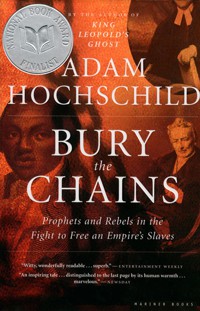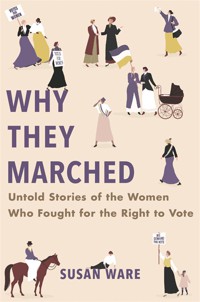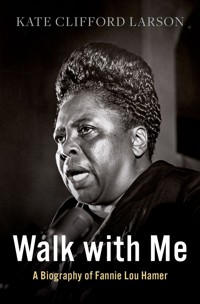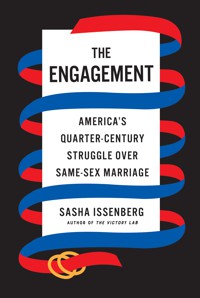How to Make Change, Slowly
Saul Alinsky, the community organizer best known for his 1971 book, Rules for Radicals, had a useful metaphor for explaining why some social movements tend to burn bright and then burn out before making the change they seek. A successful revolution, he insisted, must follow the three-act structure of a play: “The first act introduces the characters and the plot, in the second act the plot and characters are developed as the play strives to hold the audience’s attention. In the final act good and evil have their dramatic confrontation and resolution.”
In other words, a movement needs a period of incubation—of conjuring, planning, debating, and convincing. The problem with the activists Alinsky was observing was that they sprinted to that third act, taking shortcuts that led, he wrote, only to “confrontation for confrontation’s sake—a flare-up and back to darkness.” It’s a dynamic that seems particularly true today, when social media provides us with extremely effective bullhorns that can call people to the streets with enormous speed and scale, or allow for the most clickable version of a radical idea to race around the internet before being fully developed.
If our movements today can devalue that slow, unseen incubation, the stories we tell about how social or political change unfolded in the past tend to leave out this part as well. Many of those narratives, whether about women’s suffrage or the civil-rights movement, feel foreshortened, cutting out the years of struggle, or the need for debate and patience, for trial and error. Instead we zero in on the charismatic leaders’ big speeches. We fixate on the moments: policemen on horseback chasing down protesters, or a man standing up to a tank. This leaves out so much.
Luckily, some books have explored how change actually works, describing a longer range of time and a wider cast of characters. The eight books below each focus on how a status quo crumbles, and they tell the most rewarding sort of story: about a dissatisfaction shared by a small group of people that grows and grows until it alters our relationship to society, to one another, to nature itself.
The Pasteurization of France, by Bruno Latour
Latour is one of the most influential French social theorists of the second half of the 20th century. His particular interest for the past four decades has been understanding the way science continually reshapes our sense of reality. But he never formulates these shifts as the result of one great thinker exposing a truth to the world. Instead, Latour looks to the various networks and interests that mold these dramatic changes. Spreading an idea is more like war than a revelation, with the slow vanquishing of mental territory. In this 1984 book, translated into English in 1988, he went back to the 19th century and Louis Pasteur’s then-revolutionary notion that microbes cause infection and disease. How did people come to “see” germs and take steps to combat invisible enemies? It was a painstaking, grinding process, almost a political campaign, in which the scientific establishment and then farmers and industrialists had to be won over to Pasteur’s prescriptions. Even a scientific insight now everywhere understood as objective truth—that killing bacteria as a way to avoid illness is an achievable and good practice—needed to first conquer accepted reality.

Bury the Chains: Prophets and Rebels in the Fight to Free an Empire’s Slaves, by Adam Hochschild
Hochschild is better known for King Leopold’s Ghost, his harrowing history of Belgium’s brutal control of the Congo and how it was eventually relinquished. But in Bury the Chains, he tells another human-rights story, about how the movement to abolish slavery grew in Britain—a movement that, Hochschild points out, would have seemed as economically impossible at the time as a push to ban all cars would today. He begins with a small group of men meeting in a London print shop in 1787 to discuss what they had come to understand as a moral abomination: humans owning other humans. From this moment to the 1830s, when slavery was ended in almost all British colonies, Hochschild describes a sort of relay race, with that central, ethical insight passed like a baton from one actor to another. He spends time detailing the mechanics of how this happened—how, for example, a mass-produced print that depicted the arrangement of enslaved people in ship holds became a tool for visualizing the plight of the Middle Passage, or how the growing power of mass petitions, investigative reporting, and the popular testimonies of formerly enslaved people such as Olaudah Equiano increased awareness of the cruelty of the institution. Over time, these elements turned a niche concern into a mass cause.
[Read: The tipping point when minority views take over]

Inventing Human Rights: A History, by Lynn Hunt
The notion that everyone has certain inalienable rights simply by virtue of being a human being is a relatively recent advancement, dating back to the Enlightenment. Like Hochschild’s effort to reverse engineer the push for abolition, Hunt’s book seeks to understand how people’s minds expanded to take in the humanity of others—even though the supposed inclusivity of these ideas actually left out so many at first. As Hunt puts it, “How did these men, living in societies built on slavery, subordination and seemingly natural subservience, ever come to imagine men not at all like them and, in some cases, women too, as equals?” It’s a search for the development of empathy. Hunt locates this process, among other places, in the growth of reading as novels began to expose others’ inner lives and the fundamental similarity of the human experience. And she’s aware of just how long it took for this concept to truly extend to all. Not until 1948, after two global wars, did the world even acknowledge that there should be a Universal Declaration of Human Rights codified by the United Nations with the intention, in theory at least, that all of humanity should be protected by it.

The Honor Code: How Moral Revolutions Happen, by Kwame Anthony Appiah
Where Hunt shows how increased empathy could lead over time to the expansion of rights, Appiah’s book looks more specifically at three “moral revolutions,” in which long-accepted customs collapsed. He examines the end of foot-binding among the Chinese elite, British gentlemen’s dueling, and, like Hochschild, slavery in the British empire. He also looks at a fourth, contemporary instance—“honor killings” of women by male relatives in Pakistan—that allows him to catch one of these changes in medias res. In each case, altered notions of respect, shame, and dignity were key. Appiah’s larger point is that calls to reason or morality are not typically what make the difference; instead, a society’s sense of what counts as honorable behavior has to flip. When dueling became a more popular practice, for example, it lost its cachet as a way for aristocrats to preserve their pride. Foot-binding turned from a symbol of beauty to a source of embarrassment when outsiders began to criticize the tradition. A shift in mindset or a new framing can move the most established patterns of behavior from the category of acceptable to abominable.

Why They Marched: Untold Stories of the Women Who Fought for the Right to Vote, by Susan Ware
In this history of women’s suffrage, Ware spends time with the individuals who never received recognition for their efforts in the cause. She turns to people such as Rose Schneiderman, a labor organizer on New York’s Lower East Side, and Mary Church Terrell, one of the first African American women to earn a college degree. But what Ware offers is more than just a broader cast of activists. She wants to illustrate how the message of suffrage was disseminated by these campaigners, whether they were in church parlors, on college campuses, or riding on horseback through the Massachusetts countryside to speak with any women they could find. In this attention to the granular, Ware explores the thousands of ways that the idea of universal suffrage circulated and identifies who allowed it to circulate. We see minds changing, which would eventually lead to laws changing too.
[Read: Building social change from the bottom up]

Walk With Me: A Biography of Fannie Lou Hamer, by Kate Clifford Larson
Larson looks closely at one avatar of steady, committed change: Fannie Lou Hamer. A Black sharecropper from Mississippi, Hamer is best remembered for having challenged her state’s plan to seat an all-white delegation at the 1964 Democratic convention. She failed to integrate the group of representatives, but continued her campaign in Mississippi to get more Black people registered to vote. Hamer used small workshops to educate attendees about citizenship, and she helped organize Freedom Summer, which brought hundreds of volunteers to the South to aid in the registration drive. Four years later, she attended the 1968 convention, this time as a part of an integrated delegation, and by then had experience trying to run for office herself. Her focus was always on providing dignity and a sense of entitlement to people who had never been granted much of either. And she did this in the most local, grassroots ways—bothered by the dismal economic situation of Black farmers, Hamer was part of an initiative to start a “pig bank,” distributing pigs that could be bred for slaughter, and become a source of financial independence and freedom.

The Engagement: America’s Quarter-Century Struggle Over Same-Sex Marriage, by Sasha Issenberg
To people who hadn’t watched the dozens of legal battles and local campaigns waged over the previous 20 years, the Supreme Court decision to legalize same-sex marriage in 2015 may have felt like a bolt of lightning. But as Issenberg shows in his meticulous study, this story is more intricate than many assume. The book begins in Hawaii in the early 1990s, with a landmark legal decision. The movement started, in many ways, with the Hawaii Supreme Court’s ruling that gay couples’ freedom to marry was based in the state’s constitution. This was just the wedge needed for a campaign that would go from state to state, setting precedents where it could. The Engagement is also a story of the forces that pushed back, wielding their own might against what they saw as a societal and religious threat. Issenberg does not write as if that 2015 decision were inevitable. There were periods of setback followed by recalibrating approaches. There were competing strategies. He reminds us just how many factors had to combine for success: a culture that had grown less homophobic, legal tactics that kept opening doors, and a savvy set of activists who built and then knew how to deploy their political power.
[Read: The problem with social-media protests]

From #BlackLivesMatter to Black Liberation, by Keeanga-Yamahtta Taylor
It is fascinating to read Taylor’s 2016 assessment of Black Lives Matter today, after the 2020 protests over the murder of George Floyd. She was witnessing a movement that was beginning to make its mark on American society, but also struggling to address more than specific instances of police violence. With hindsight, we know how the attention to recurring videos of brutality led to a broader demand for new forms of community safety and a confrontation with institutional racism. But Taylor worried that this new generation of activists was not focused enough on the underlying capitalist structures that created many of these problems. That might be a reason why the cause that grabbed such attention two years ago once again seems to have receded into the background. Taylor has her theories to explain the ebb and flow, and they echo the concerns of Saul Alinsky. What the activists of Black Lives Matter lacked, Taylor wrote in 2019, was the space to work out what they wanted to achieve and how they might get there, beyond the moments of public spotlight. What they needed was the opportunity to “collectively assess, discuss, or ponder what the movement is or should be.” Or, as Alinsky might have put it, they could still use those first two acts.
When you buy a book using a link on this page, we receive a commission. Thank you for supporting The Atlantic.
